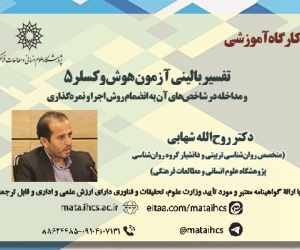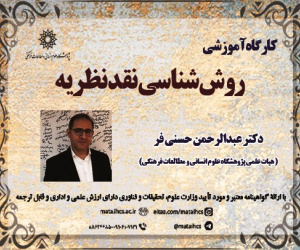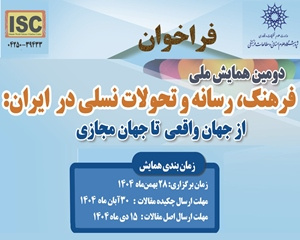راهبردهای طراحی صحنه های تهران دوران پهلوی اول در سینما و مجموعه های تلویزیونی (با نگاهی خاص به مجموعه تلویزیونی "مدار صفر درجه" در چارچوب نظری "شیوه های معماری دوران پهلوی اول" سیدمحسن حبیبی) (مقاله علمی وزارت علوم)
درجه علمی: نشریه علمی (وزارت علوم)
آرشیو
چکیده
یکی از محبوب ترین گونه های مجموعه های تلویزیونی، گونه مجموعه های تاریخی است. طراحی صحنه این گونه آثار، در زمره مشکل ترین انواع صحنه پردازی به شمار می رود. مشکلاتی نظیر عدم احاطه کامل بر دوره تاریخی مزبور و فقدان شناخت کامل معماری دوره یادشده، ازجمله این مسائل به شمار می روند. هدف این نوشتار، گشودن پنجره ای تازه و علمی بر معماری دوران پهلوی اول و چگونگی استفاده از آن برای طراحی صحنه تلویزیون و سینما است. دوره ای تاریخی که سریال های متعددی بر مبنای آن ساخته شده و در بسیاری از آنها، صحنه پردازی علمی و درستی صورت نگرفته است. روش مورد استفاده در تحقیق، روش تطبیقی است و در همین زمینه، تلاش شده است از نظریه های دکتر حبیبی و دسته بندی وی مبنی بر معرفی چهار الگوی مشخص و علمی معماری دوره پهلوی اول استفاده شود. در ادامه، طراحی صحنه مجموعه مدار صفر درجه بررسی شده و الگوی چهارگانه دکتر حبیبی، با صحنه پردازی این سریال تطبیق داده شده است. نتیجه این تحقیق، طراحی صحنه مدار صفر درجه را به عنوان نمونه ای درست، علمی و منطبق بر اصول معماری شهری دوره پهلوی اول معرفی کرده است و آن را به عنوان یک الگو به طراحان صحنه پیشنهاد می دهد.With Specific Study of "Madar Sefr Darageh" TV Series based on Dr. Seyed Mohsen Habibi's Theory about Pahlavi I Dynasty Architecture
one of the most popular genres of TV series in Iran is the historical genre. Especially, popular is the contemporary era depicted in the TV series in which their stories illustrate the ending of Qajar dynasty and the beginning of Pahlavi dynasty. Audiences’ acclamation in watching TV series such as, Hezar Dastan, Kife Englisi (English Bag), Shabe Dahom, (The Tenth Night) and Madar-e Sefr Darajeh (The Zone of Zero Degree) definitely prove this fact. A most certainly, one of the most important elements in such an acclamation and audiences’ consideration is production design element of this specific genre of TV series. These designs refer audiences to Tehran’s previous decades and their themes. Yet, lack of exact frameworks, well-defined patterns and definite role models of Tehran architecture of those days is the main problem of production designers of such invaluable opuses. Production designers chiefly accumulate their former knowledge of architecture and designs which are learnt by unfocused studying of the survived images of those eras and by referring to old people’s memories in producing design for required locations, but such an attitude in production design contributes to scattering and chaos in locations and eliminates opus’s coordination and harmony in miser en scene based on contemporary architecture. Utilizing exact frameworks recommended by architects and researchers of the first Pahlavi architecture and recognizing diverse styles of this era’s architecture would surely create a role model for designers in order to create locations and scenes in a suitable way. Dr. Seyed Mohsen Habibi is an architect who has classified and distinguished four main separated patterns of architecture of the first Pahlavi. Thus this quartet role model absolutely is able to be counted as a reliable framework in order to design locations of historical opuses of first Pahlavi dynasty. It has been attempted to present this role model by analyzing and evaluating production design of one of the most successful TV series of recent years, Madar-e Sefr Darajeh (The Zone of Zero Degree), a TV serial by Hassan Fathi, in this attendant article. In order to overhaul the quartet role model of first Pahlavi dynasty accurately in Madar-e Sefr Darajeh TV series, the paper was relied on available documentations and interviews. In this paper, after reviewing the history of production design formation and the position of a production designer, some popular architectural patterns of first Pahlavi dynasty and their features are introduced. Then seven main interior locations of the TV series, their places in each architectural styles of that era and the alternative patterns are discussed. Finally, after representing a table based on usage of the quartet role model of those days in chief locations, it is argued that this TV program may be one of the accurate historical programs in which all four architectural patterns of first Pahlavi dynasty was manipulated in an intellectual, strong and consonant way. It is an instance in which all four popular styles of first Pahlavi dynasty were utilized and could be a role model to work in TV productions.







